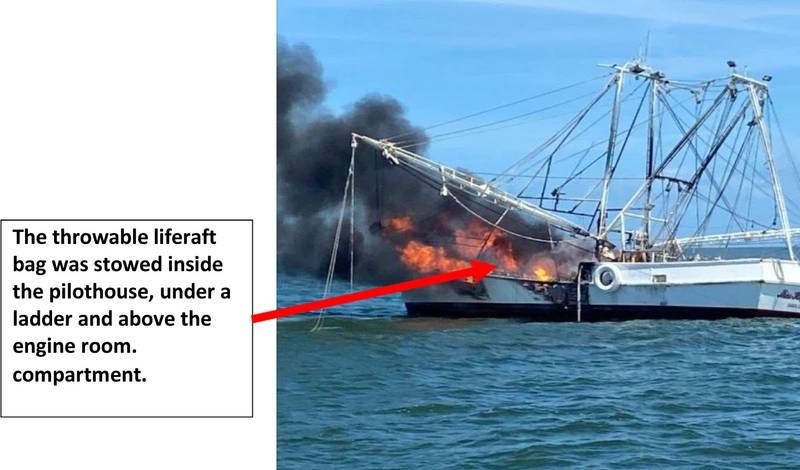USCG Safety Alert: Mind Your Lifesaving Equipment Stowage
Two recent marine casualties on commercial fishing vessels (CFVs) highlighted hazardous stowage conditions that rendered onboard lifesaving equipment ineffective.
During the first incident, a 41-foot CFV capsized and sank within two minutes after taking on water. The personal flotation devices (PFDs) were not stored in an easily accessible location, preventing the crew from retrieving them before exiting the vessel. Additionally, the liferaft and hydrostatic release unit were attached to an aftermarket fiberglass canopy, which broke away and floated free during the capsizing, preventing automatic deployment. Fortunately, a crew member managed to swim to the floating canopy and manually deploy the liferaft.

For the second incident, a 60-foot CFV caught fire, forcing the crew to rapidly evacuate. Although the crew retrieved PFDs before abandoning the vessel, they were not readily accessible. Rather than being stowed at normal workstations (e.g, the bridge, aft deck), the PFDs had been stowed in the galley within bench seating. Additionally, the throwable liferaft was stowed under an internal pilothouse ladder, obstructing easy access and deployment. This stowage location was directly above the engine room, where the fire originated. The intensity of the engine room fire prevented the crew from retrieving the liferaft before abandoning the vessel.

Image courtesy USCG Marine Safety Alert 01-25
The Coast Guard strongly recommends that operators of CFVs:•Ensure automatically deployable liferafts are attached to a strong, permanent, original structure with no overhead or nearby obstructions that could impede their float-free deployment.
- Stow manually deployable liferafts in accordance with USCG requirements for readily accessible liferaft launching, per 46 CFR 28.125.
- Store PFDs in locations that are readily accessible to all crew members and, if possible, in a manner that allows them to float-free in the event of capsizing.
(Source: United States Coast Guard Marine Safety Alert, January 2, 2025)
